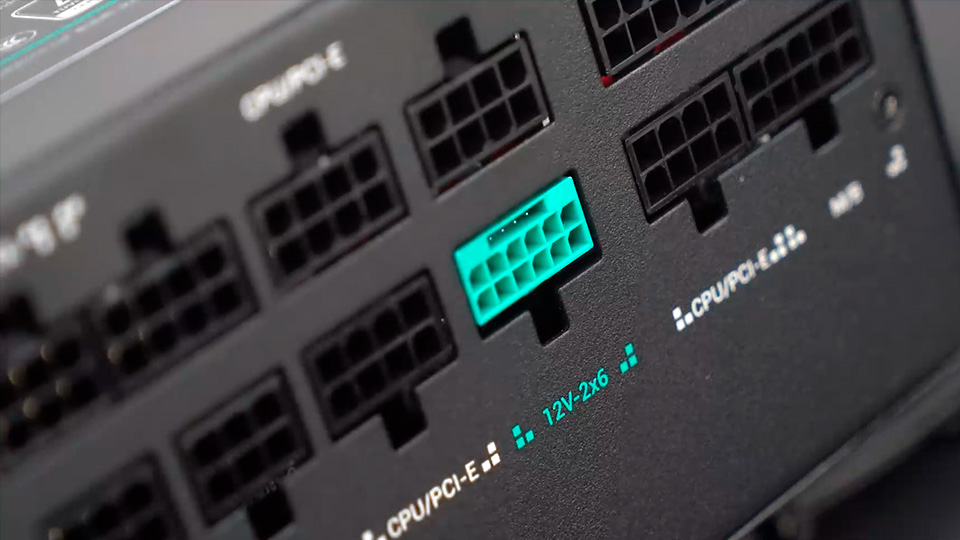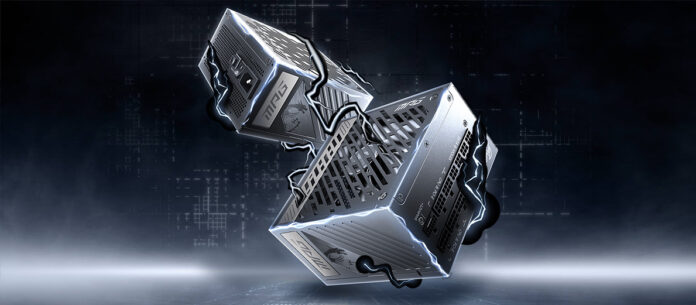There are many myths and misconceptions about the power of power supplies. Some believe that you need to choose a power supply based on the recommended power of the video card. Others believe that you need to use special calculators and calculate what power is needed. Today we will analyze the most popular mistakes and teach you how to choose the right power supply for your computer components.
The whole truth about the recommended power supply power in the video card parameters
NVIDIA and AMD always indicate the recommended power supply capacity for a video card in the specifications. Many users are sure that you need to choose a PSU based on this parameter. And if you install a weaker power supply in your PC, the video card will not be able to operate at full capacity, which will lead to errors and instabilities. In reality, this is a huge misconception.
NVIDIA and AMD don’t know what components are in your PC and how much power they consume. That’s why video card manufacturers play it safe and always indicate a very high value for the recommended power supply.
For example, if you have a top-end computer based on an Intel Core i9-14900K processor with several hard drives, then for the NVIDIA GeForce RTX 4080 Super video card you will really need a power supply with a capacity of 850 W, as the manufacturer indicates. But if your PC has an Intel Core i5-14400F processor without hard drives, then in reality for the same video card you will need a PSU of even 550 W. The main thing is that the power supply itself is of high quality and really produces 550 W of power.
So when choosing a PSU, don’t rely on the recommended power specified in the video card specifications. Look at the actual power consumption of the accelerator.
How to find out the real power consumption of a video card
Some vendors indicate the actual power consumption of video cards in their specifications, but not all do so. In the specifications of most graphics accelerators, you will not find information about the actual TDP of the device.
To find out the real power consumption of a video card, look at reviews on the Internet. Just enter the name of your graphics accelerator in the search bar and add the word review. Read text materials or watch videos. Reviewers always indicate the real maximum power consumption of video cards.
Keep in mind that power consumption may vary depending on the graphics card design. For example, the maximum power consumption of the NVIDIA GeForce RTX 4090 MSI Suprim is 480 W. The same graphics accelerator in the Palit GameRock design consumes 450 W, that is, 30 W less. Consider this when deciding which power supply to choose for the graphics card.
The Whole Truth About Power Calculators
There are many online calculators on the Internet that allow you to calculate the power of computer components. We do not recommend using them, as they can add an additional 50-150 W and offer more expensive power supplies for purchase.
The creators of these calculators are also playing it safe, just like the video card manufacturers. After all, they can’t know exactly what components you have and how much they consume. Even the most accurate calculators, which require you to specify the number of fans, still overstate the power consumption value.
So, don’t use online calculators to calculate power. Instead, calculate power consumption yourself. Just add up the TDP of the CPU and the graphics card. Then add the consumption of the other components to the resulting value:
- fan up to 6 W;
- hard drive up to 10 W;
- SSD drive up to 3 W;
- RAM bar up to 6 W.
The resulting value will be the actual power consumption of your PC under maximum load. Choose the power supply unit for the video card based on this value.
Is it worth choosing the power supply unit capacity “at the limit”
Having made calculations and learned the actual power consumption of components, you should not buy a power supply unit “too tight”. Take a power supply unit with a power of 100-150 W more. In this case, the component base will not be loaded to the maximum, which will extend its service life. In addition, in the future, you will not have to change the power supply unit if you want to upgrade your PC and install a more powerful processor or video card.

Availability of 12VHPWR connector
With the release of the GeForce RTX 4000, NVIDIA changed the power connectors on its graphics cards. If previously 6+2 pin cables were used, now only one 12VHPWR connector is needed. On the one hand, this is a plus, since you no longer need to lay several cables in the system unit if the graphics card has 2 or 3 power connectors. On the other hand, most PSU manufacturers do not produce units with 12VHPWR connectors.
Many users are afraid that they will not be able to power the NVIDIA graphics card, but in reality this is not a problem. Graphics accelerator manufacturers always include adapters from 6+2 pin to 12VHPWR. In addition, they are inexpensive, and you can always buy them separately. Therefore, you should not worry about the presence of a 12VHPWR cable in the power supply for the new NVIDIA graphics card. With the help of an adapter, you can easily power the graphics accelerator.
Which power supply to choose for a computer video card: results
When choosing a power supply for a video card, you should not rely on the recommended power supply power in the characteristics of the graphics accelerator. Also, you should not use online calculators to calculate power, as they are very inaccurate and can add an additional 50-100 W to the actual power consumption of the PC.
To find out what power supply to choose for your video card, do the following:
- find out the real power consumption of the processor and video card from reviews;
- calculate the total power consumption of all PC components;
- add 100-150 W to the obtained value for reserve.

